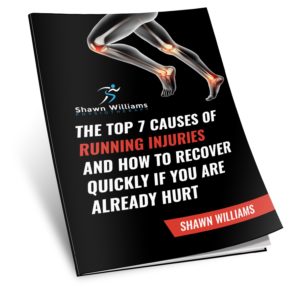If you are like most runners, you have experienced some sort of pain and thought to yourself, “I will just rest for the next few days, and it will get better.”
However, this rarely works as a long-term solution to any injuries, including those associated with running. Frequent training often results in overuse injuries, caused by a multitude of risk factors coming together to create an injury. These types of complex injuries very rarely heal with just rest. If your pain does improve with rest, it may be because your body has developed compensations to allow you to run with little or no pain. Although this may allow you to keep training for a while, other areas of your body are at increased risk of developing another injury when they compensate for an injury. The best way to treat an overuse injury is to visit a professional trained in assessing movements.
For example, you begin to develop pain in your knee while you are running. It really only hurts while you are running; you figure if you take a few days off, it should get better. But when you return to running a few days later, not only is it still painful, it has begun to hurt even when you are just walking. It is possible you have developed Runner’s Knee (also known as patellofemoral syndrome), which is the result of repetitive microtraumas. With an overuse injury, such as Runner’s Knee, a physiotherapist will examine your gait pattern, potential muscle imbalances, and anatomical factors to determine why you developed this type of injury. This means they will be able to treat your injury, and prevent future injuries from occurring.
Even if your running injury is the result of an acute strain or sprain, evidence shows the classic RICE (Rest, Ice, Compression, Elevation) may not be the best approach. Rest results in decreased blood flow to the injured area, which can delay healing. Light movement/activity promotes blood flow, allowing for the delivery of oxygen and removal of metabolic waste; thus, promoting healing. Gentle movement also prevents muscles from weakening and decreasing in size.
Following a suspected sprain or strain, a physiotherapist will be able to guide you through movements and exercises that will promote your healing process, and tell you which to avoid. After the pain, swelling, bruising, and inflammation have gone down, a physiotherapist will also give you personalized exercises to help you get back to running safely, decreasing your risk of re-injury.




